In poker, professional players love it when an overconfident novice, riding their beginner's luck, joins them in a high stakes game. This presents an inefficiency, which will generally benefit the professional players. We believe there are parallels between this poker example and the influx of retail investors who have entered the Australian stock market during COVID-19.
Everyone loves a bargain
In March and April 2020, the first wave of COVID-19 wreaked havoc across Australia, causing lockdowns and a sharp crash in the stock market. However, unemployment and contagion weren't the only things that were growing.
The participation of retail investors in the stock market experienced a boom of sorts. The chart below shows the performance of the S&P/ASX 300 Accumulation Index against frequency of searches for ‘Stock market’ and ‘Commsec’ on Australian domiciled Google searches.

Source: Google and Refinitiv
Furthermore, retail investor trading activity multiplied exponentially, exhibited in the charts below.
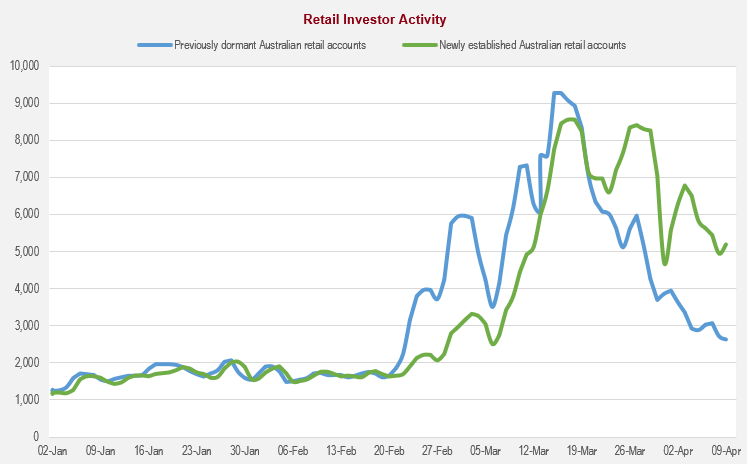
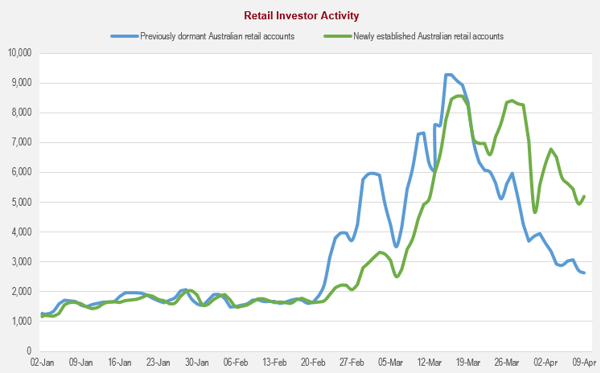
Source: ASIC
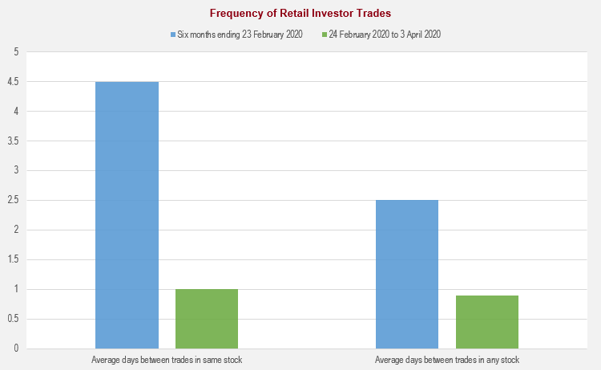
Source: ASIC
As the stock market was rapidly crashing, retail investors opened new trading accounts or revisited their dormant accounts to deploy capital. Trading frequency also increased with the duration between trades reducing significantly, evidence that retail investors were taking even shorter-term views.
This is easy!
Whilst the broader market has performed well from its trough, we found that several stocks popular with retail investors had performed even better. We’ve defined popular retail stocks as those with strong brand recognition and price momentum leading into the crash. The performance of these stocks relative to the broader market can be seen in the chart below.
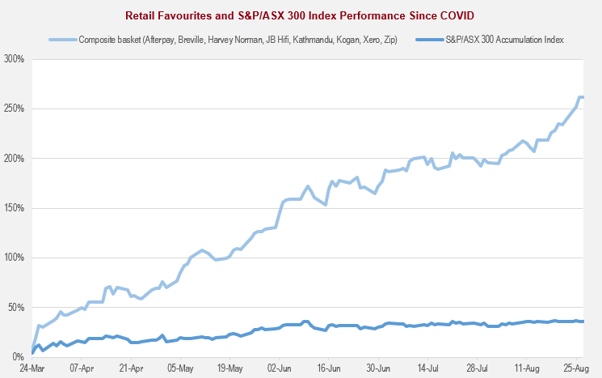
Source: Refinitiv
From the depths of the COVID-19 drawdown, an equally weighted basket of these popular stocks outpaced the broader market by more than seven times!
Momentum investing - a common strategy for retail investors
Behavioural finance studies show that momentum trading is a strategy that’s immediately comfortable for investors to adopt. Investors naturally feel better about buying stocks that have upward trending prices, whilst small dips along the way offer investors the chance to participate in the trend without feeling like they’ve overpaid.
The momentum factor in Australia has performed very well historically, significantly outperforming the broader market. The performance differential can be viewed in the chart below.
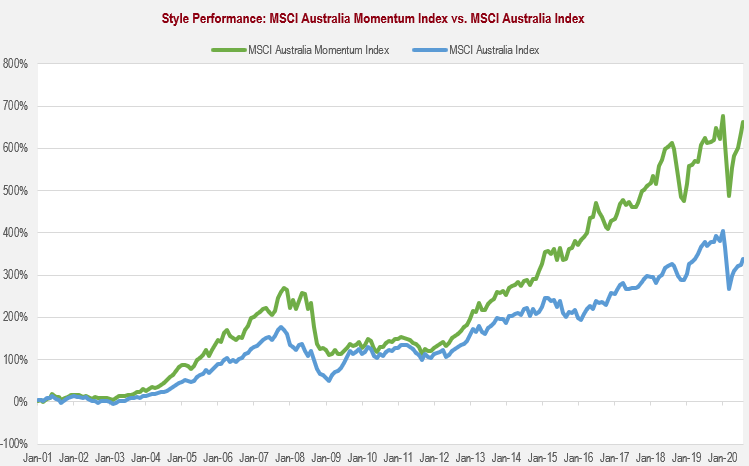
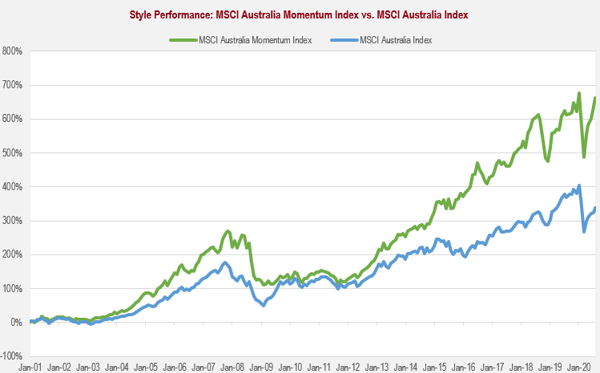
Source: Refinitiv
Whilst the performance of the momentum factor in Australia has been impressive, we found that its drawdowns[1] can be extremely violent. The chart below summarises our findings.
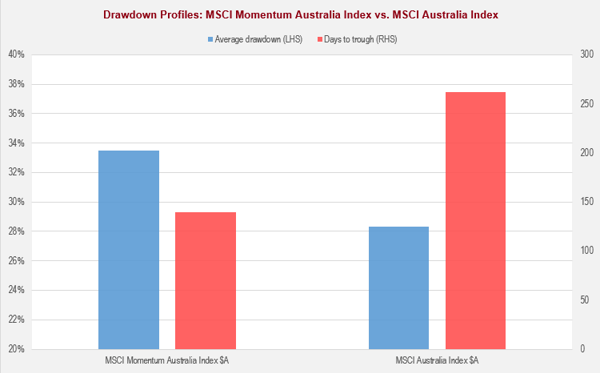
Source: Refinitiv
As captured in the chart above, the average drawdown of the momentum factor is significantly greater than that of the broader market. In addition, the drawdowns occurred in nearly half the time it takes the broader market, on average.
We believe retail investors should heed caution from this concerning drawdown profile.
DIY equities investing - what can go wrong?
In general, when seeking to successfully achieve a specialised task or objective, individuals usually seek out a professional for their expertise in the field. However, along with home improvement, investing is a field where people have shown some propensity to believe that ‘doing it yourself’ may yield a better overall outcome, with costs considered. We believe, like most DIY home improvement projects, the cost of DIY equities investing can get out of hand quickly whilst investment outcomes (or the bathroom renovation!) remain incomplete.
Importance of taking a longer-term approach
Given the shorter-term focus of retail investors, we believe investment outcomes will typically disappoint over the longer term. Our view is supported by a study on Peter Lynch’s Magellan Fund, which found that despite the fund returning 29% p.a. during Lynch’s tenure, the fund’s average investor lost money over the period. This surprising outcome was primarily due to investors attempting to tactically enter and exit the fund.
We’ve conducted our own analysis on the pitfalls of market timing. Our analysis was conducted on the Australian momentum factor and the broader market, using the following assumptions:
- if a cumulative drawdown of 15% is reached, the investor removes all market exposure, and
- should the cumulative return of the last 30 days reach 15% or the drawdown recovered, the position will be re-established.
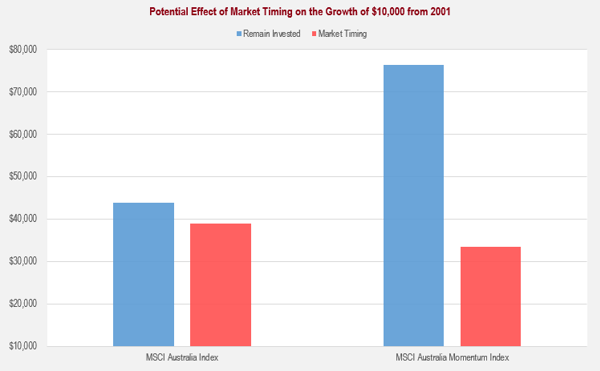
Source: Refinitiv and Zenith
Our analysis confirms the contention that remaining invested produces far superior investment outcomes than tactically timing entries and exits. This is particularly the case for the momentum factor.
What are the benefits of investing with professional investors?
We believe there are multiple advantages that professional investors have over retail/amateur investors including:
- expertise and experience – drawing upon expertise and experience, professional investors are less prone to act on emotional biases
- well resourced – professional investors have access to copious amounts of information and customised investment tools. In addition, professional investors generally operate with well-resourced teams, and
- scale – greater levels of assets lead to more cost-efficient trading and access to specialised information and deal flow.
Ultimately, we believe investing with a professional should result in stronger investment outcomes over the longer term. Furthermore, it will allow retail investors to reduce stress and focus on other interests (maybe completing that unfinished bathroom renovation!).
Active Australian equities funds perform well with reduced risk
When assessing the upside and downside capture ratios[2] of our rated managers, it’s evident that downside protection and significant upside participation can be achieved through an allocation to active Australian strategies.
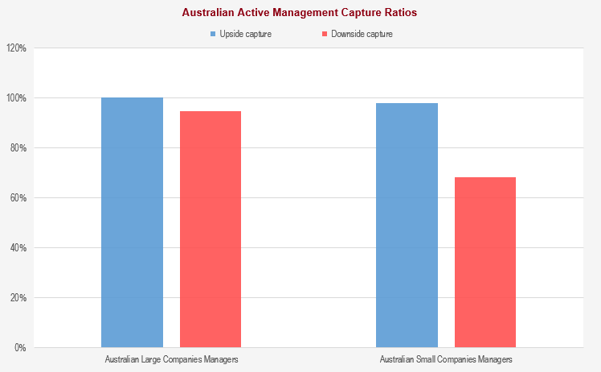
Source: Refinitiv and Zenith
We note that the average Australian large companies fund we rated achieved an excess return of 0.7% p.a. (after fees) over the period of assessment, whilst the average Australian smaller companies fund rated outpaced their benchmark by 4.9% p.a.
Quit while you’re ahead
For amateur investors who have been fortunate enough to participate in some profitable trading during a highly conducive environment, we believe better long-term outcomes can be achieved by investing in an actively managed investment product.
In closing, we borrow a quote from Warren Buffett, one of the most famous professional investors in the world.
“If you've been playing poker for half an hour and you still don't know who the patsy is, you're the patsy.”
[1] Drawdown defined as a 15% fall from peak to trough.
[2] Upside capture ratios measure the performance of active managers in months where the corresponding benchmark has recorded positive performance. Downside capture measures the performance of active managers where the benchmark has recorded negative performance. An upside capture ratio greater than 100% indicates that, on average, active managers outperform their corresponding benchmark when the benchmark has a positive month. A downside capture ratio below 100% indicates that, on average, active managers have protected capital better than their corresponding benchmark when the benchmark has negative month.







